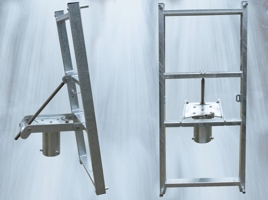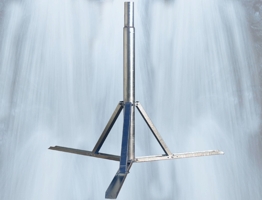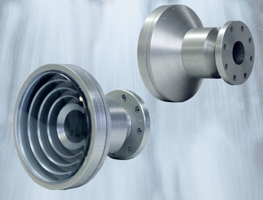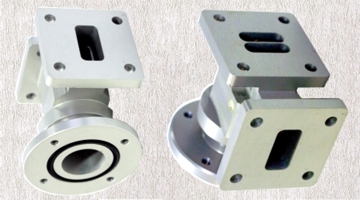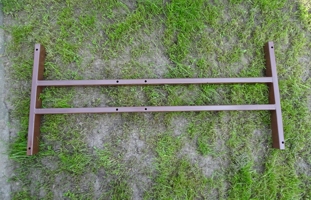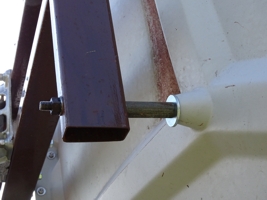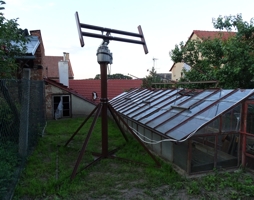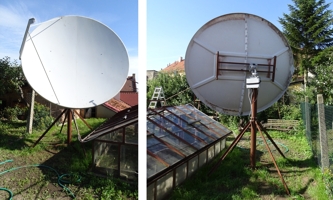Description of the Laminas 2700 dish and how to mount it
The Laminas 2700 dish is a Polish product. The material of the parabolic reflector is made of glass epoxy composite. Produced in two versions, the Laminas 2700 is the basic version. The Laminas 2700G is also being produced, which also contains an anti-icing heating device. Because I have never had a heated dish and because this heating increases the weight of the dish by 10 kg and consumes 2 x 590 W, I decided to buy the basic version. Well, maybe I didn't do well. Only the winter months will show that. In the meantime, let's see what data about its dish is revealed by its manufacturer.
| Parameter | Unit | Value | |
| Effective Reflector Size (2-piece) | mm | 2710 x 3015 | |
| Operating Frequency | GHz | 10,7 ÷ 12,8 | |
| Gain (for frequency in GHz) | 10.7 GHz | dBi | 47,7 |
| 11,3 GHz | dBi | 48,2 | |
| 12,6 GHz | dBi | 49,0 | |
| 3dB Beamwidth (for frequency in GHz) | 10.7 GHz | ° | 0,70 |
| 11,3 GHz | ° | 0,65 | |
| 12,6 GHz | ° | 0,60 | |
| Focal Length | mm | 1480 | |
| Offset Angle | ° | 25,5 | |
| Feed Clamp Diameter | mm | 40 | |
| Antenna Weight no mount | kg | 53,5 | |
| Antenna Weight with mount | kg | 98,0 | |
| Operating Temperature | °C | -40 ÷ +50 | |
| Survival Temperature | °C | -50 ÷ +80 | |
| Operating Wind Loading | km/h | 80 | |
| Survival Wind Loading | km/h | 200 | |
| Standard Color | - | RAL7047 | |
| Shipping packaging | mm | 2810 x 460 x 1580 | |
A steel holder is supplied with the dish. I did not buy it, so I will not describe its dimensions here. Those interested can find it on the manufacturer's website under the name ASZ-2700M.
Fig. 1 - Original dish holder ASZ-2700M
Another optional accessory is a stand. I didn't buy it either. The manufacturer supplies it under the designation STP-2700. At first glance, it doesn't look very massive, just for information. Height is 1960 mm. Diameter of the upper part of the support tube 135 mm, diameter of the lower part of the support tube 159 mm. Base arm length 1200 mm. Weight 60 kg.
Fig. 2 -The original stand STP-2700 for the dish
Another essential accessory is the feedhorn. Of course, I already bought it. It is marked PO-40. I was a little surprised that it is not designed exclusively for the Laminas 2700 dish. The manufacturer sells it for all its dishes. Out of curiosity, I recalculated the f / D of the individual dishes and found a range of 0.545 ÷ 0.727. So it's probably okay.
Fig. 3 - Feedhorn PO-40 supplied with a dish
If you think a lot ahead, you can just buy a switch for two single-polar LNBs. I haven't done it yet, but I'm starting to think about it. The manufacturer offers it under the name Ortho Mode Transducer C120 / WR75.
Fig. 4 - Ortho Mode Transducer C120 / WR75
I originally intended to make my shoot using two traction motors. One for rotation in the azimuth direction, the other in the elevation direction. I took the advice of other users that a polarmount is no longer suitable for such a large dish, although this brings a problem with the rotation of the skew LNB in linear polarization.
For this reason, I only bought my own parabolic surface, with the proviso that I will solve its attachment for filming on my own. Here it is necessary to recall the manufacturer's warning that the antenna must be attached with four screws to a sufficiently rigid support frame. The mere connection of the two halves on the central collar with the help of 33 screws does not ensure sufficient strength of the entire parabola and therefore cannot be operated without a supporting frame.
Fate wanted it that after purchasing the dish, I managed to get a complete functional professional positioner EGIS for an advertisement in Italy. This changed my plans from the ground up, and I began to work on attaching the Laminas 2700 to this positioner. In the end, I made the frame you see in the picture.
The material used is iron steel 80 x 35 x 2 mm. The external dimensions of the frame are 1565 x 690 mm. The mounting holes for the dish are 1530 and 610 mm apart. The fixing screws of the dish are M12 and the holes in the dish and the holder are M14. The screws on the side of the LNB holder are 250 mm long, while the remaining two screws on the other side are 280 mm long. The supporting frame cannot be screwed directly to the surfaces of the dish, so I made 65mm long spacers from a galvanized water pipe. Even so, it turned out that the space between the supporting frame and the middle collar for connecting the two halves of the dish is only a few millimeters. The spacers should be 5 mm longer.
Fig. 6 - Mounting detail - spacer
In the next picture you can see the dish holder screwed to the EGIS positioner and the whole supporting structure. A description of the dimensions of the support mast and its construction can be found on the website on the reconstruction of the EGIS positioner. Everything is located in my makeshift post in the garden behind the old greenhouse. If there seems to be something wrong with the holder, you have a good perception.
Fig. 7 - Frame on the positioner
The critical situation occurred due to the fact that the dish is offset with an offset angle of 25.5 °. The EGIS positioner, which I did not anticipate at the time of purchasing the dish, has an elevation setting range of 10 ° ÷ 50 °. If I screw the dish and its supporting frame directly onto the EGIS, the offset of the dish would be added to the EGIS setting angle. The dish would then move in the elevation range of 35.5 ° ÷ 75.5 °. And that's beyond the elevation of all the satellites visible from my position.
The first logical idea to solve the situation was to insert a wedge with an angle of 25.5 ° between the EGIS and the dish holder. I thought for a long time about what material to make it, how big it should be and how to place all the fixing screws. I couldn't think of anything simple enough. Then I realized that with the distance wedge I will solve the range of movement of the parabola in the correct range of elevation angles, but with a larger tilting of the parabola, its lower edge will strike the supporting structure.
For a while, I was literally desperate for the situation. I blamed myself for not buying a prime focus dish, like the Portuguese Famaval 230. And I didn't know what to do with it. And then a completely crazy thing occurred to me. Rotate the dish 90 °. Position the offset axis horizontally. This would easily solve the 25.5 ° displacement by rotating the support mast tube. In the direction of the elevation adjustment, there would then be a symmetrical side of the parabola, which acts as a central parabola, and therefore the elevation range adjustable on the EGIS positioner will be sufficient.
The solution is very elegant. However, I needed to somehow verify that the rotation of the offset parabola in the horizontal direction is usable and functional. If in such a position it is possible to point the dish correctly at the satellite. I was looking for some information on the net about whether someone had tried something similar before me and with what result. I found attempts to deflect the parabola from the vertical, but it was always only a few units to tens of degrees.
In one case, I found a picture of a dish turned horizontally, but the LNB holder was moved back to a vertical position, that is, to the side of the dish. I didn't like that at all. I consider the LNB together with the parabola to be one compact unit that I do not want to interfere with. So I didn't find out if the offset dish will work horizontally on the net. For a while, I toyed with the idea of attaching a small offset dish to EGIS and verifying the possibilities of reception in practice. But because I couldn't wait to try the big dish, I decided to take a risk due to time constraints and skip the attempts with a small dish.
Fig. 8 - Offset dish turned horizontally
Well, here you see the result. I admit that the sight of such a turned dish irritated me a lot at first. And my fears grew about whether it would work at all. After all, I could not imagine the geometry of the motion of a dish placed in this way in relation to a number of satellites in the sky. Whether or not I was crazy had to be decided by a practical test.





